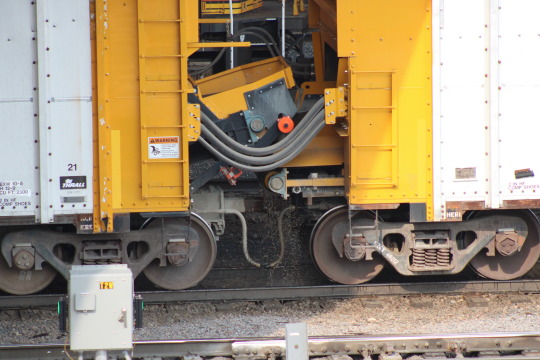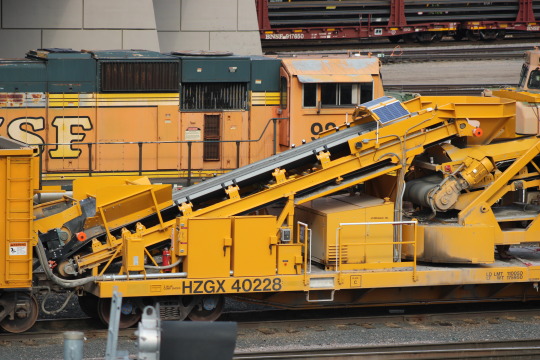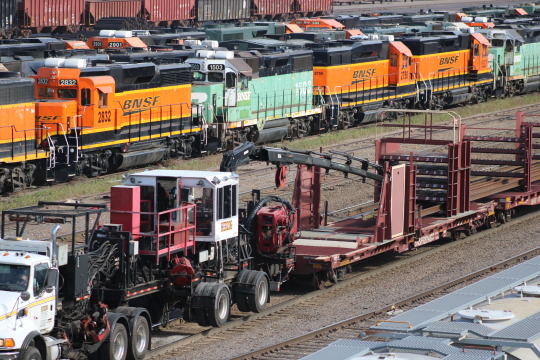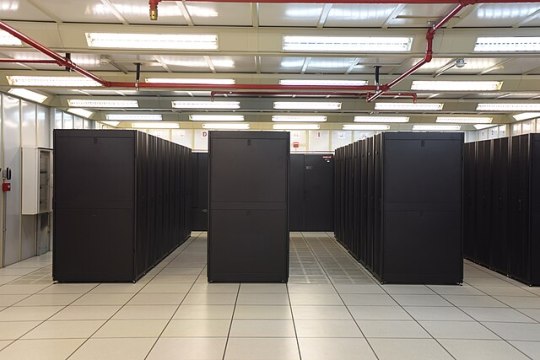#mpi machine
Explore tagged Tumblr posts
Text
Eddy Current Testing Machine-Magkraftndt

Magkraftndt Eddy Current Testing Machine uses electromagnetic induction to detect hidden flaws in metal materials. It’s quick, non-invasive, and accurate, helping ensure the quality and safety of components without causing any damage or affecting their performance.
#Magkraftndt#mpi machine#eddycurrenttestingmachine#nondestructivetesting#metaltesting#testingtechnology#magneticmahine#demagnetizermachine#magnafluxmpimachine#eddycurrentparticletestingmachine#mpimachinemanufacturer
0 notes
Text
Magnatech RMC is known for providing advanced, high-performance Magnaflux machines, designed to detect surface and subsurface flaws with accuracy, making them an ideal choice for industries requiring stringent quality control. #MagnafluxMachine #Machine #business
#magnaflux machine#magnaflux machine manufacturers#magnetic crack detector machine#ndt inspection machine#crack check machine#business#ndt machine#demagnetizer machine#mpi machine#mpi machine manufacturer#mpi machine supplier
0 notes
Text

Neural network deciphers gravitational waves from merging neutron stars in a second
Binary neutron star mergers occur millions of light-years away from Earth. Interpreting the gravitational waves they produce presents a major challenge for traditional data-analysis methods. These signals correspond to minutes of data from current detectors and potentially hours to days of data from future observatories. Analyzing such massive data sets is computationally expensive and time-consuming.
An international team of scientists has developed a machine learning algorithm, called DINGO-BNS (Deep INference for Gravitational-wave Observations from Binary Neutron Stars) that saves valuable time in interpreting gravitational waves emitted by binary neutron star mergers.
They trained a neural network to fully characterize systems of merging neutron stars in about a second, compared to about an hour for the fastest traditional methods. Their results were published in Nature under the title "Real-time inference for binary neutron star mergers using machine learning."
Why is real-time computation important?
Neutron star mergers emit visible light (in the subsequent kilonova explosion) and other electromagnetic radiation in addition to gravitational waves.
"Rapid and accurate analysis of the gravitational-wave data is crucial to localize the source and point telescopes in the right direction as quickly as possible to observe all the accompanying signals," says the first author of the publication, Maximilian Dax, who is a Ph.D. student in the Empirical Inference Department at the Max Planck Institute for Intelligent Systems (MPI-IS), at ETH Zurich and at the ELLIS Institute Tübingen.
The real-time method could set a new standard for data analysis of neutron star mergers, giving the broader astronomy community more time to point their telescopes toward the merging neutron stars as soon as the large detectors of the LIGO-Virgo-KAGRA (LVK) collaboration identify them.
"Current rapid analysis algorithms used by the LVK make approximations that sacrifice accuracy. Our new study addresses these shortcomings," says Jonathan Gair, a group leader in the Astrophysical and Cosmological Relativity Department at the Max Planck Institute for Gravitational Physics in the Potsdam Science Park.
Indeed, the machine learning framework fully characterizes the neutron star merger (e.g., its masses, spins, and location) in just one second without making such approximations. This allows, among other things, to quickly determine the sky position 30% more precisely. Because it works so quickly and accurately, the neural network can provide critical information for joint observations of gravitational-wave detectors and other telescopes.
It can help to search for the light and other electromagnetic signals produced by the merger and to make the best possible use of the expensive telescope observing time.
Catching a neutron star merger in the act
"Gravitational wave analysis is particularly challenging for binary neutron stars, so for DINGO-BNS, we had to develop various technical innovations. This includes, for example, a method for event-adaptive data compression," says Stephen Green, UKRI Future Leaders Fellow at the University of Nottingham.
Bernhard Schölkopf, Director of the Empirical Inference Department at MPI-IS and at the ELLIS Institute Tübingen adds, "Our study showcases the effectiveness of combining modern machine learning methods with physical domain knowledge."
DINGO-BNS could one day help to observe electromagnetic signals before and at the time of the collision of the two neutron stars.
"Such early multi-messenger observations could provide new insights into the merger process and the subsequent kilonova, which are still mysterious," says Alessandra Buonanno, Director of the Astrophysical and Cosmological Relativity Department at the Max Planck Institute for Gravitational Physics.
IMAGE: Artist impression of a binary neutron star merger, emitting gravitational waves and electromagnetic radiation. Detection and analysis of these signals can provide profound insights into the underlying processes. Credit: MPI-IS / A. Posada
youtube
4 notes
·
View notes
Text
Northtown Maintenance-of-Way, part 3
For the final part of this mini-series, I'll be focusing on a few miscellaneous, specialized machines used in the track maintenance process. Each one's role can be done by other, less specialized machines, but it would be a good deal harder.

This is a Mineral Products Inc. Multi-Purpose Machine. It's a mechanical jack of all trades, used for everything from trenching to blowing snow off of tracks. Its most common use is as a 'yard cleaner': the big broom mounted to the front picks up material between the rails and loads it onto a conveyor belt, which can dump it off to the side or into a towed railcar. Another popular job is snow removal: the broom is exchanged for an auger system, and the rear-most conveyor can be replaced with an impeller fan and chute. MPI's website says the machine can move 2000 pounds of snow per hour, and the blower can fling it up to 150 feet away from the tracks. Because it's not limited to just the rails, it can also be used on yard roads & parking lots. Other attachments include a trencher, air blower, rotary broom, and a hydraulic arm which can be fitted with its own range of attachments. I'm starting to sound like a shill here... but it is a pretty cool piece of kit.

The next piece of machinery is Herzog's ACT, or Automated Conveyor Train. It's a special set of cars which uses a conveyor system and swinging boom to "precisely" drop ballast where it's needed. The yellow thing seen above is the train's main power unit. I don't know if it uses hydraulic or electric motors, but this car powers them. Each train set has up to 30 cars, which are just high-side gondolas with conveyors in the bottom. Each car has its own conveyor, which dumps into the next car's conveyor through a small hopper.

A closer look at the connection between cars. I don't know if the water is from recent rains or the train's dust suppression system.


And here's the 'front' of the train, which is really the end. It features the operator's cabin and the most important bit, the unloading arm. It can move ballast 50 feet from the center of the tracks, according to Herzog's website. Conveyor trains like this one are mostly used for filling in washed-out track beds, but can also strategically place piles of ballast for future projects. As of writing this post, the control car is still less than a year old. It really is the cutting edge of ballast-dropping technology!

The last machine is another Herzog product: the creatively-named Rail Unloading Machine. It looks complicated, but is actually quite simple. A crane arm feeds sticks of continuously-welded rail (CWR) into a roller system, which feeds it forward (backwards, really) through two clamps and onto the ground.

A view of the other side. Same deal, but all folded up. Check out the flex on that arm!

5 notes
·
View notes
Text
🔁 on repeat tag game 🔁
rules: shuffle your on repeat playlist and add the first ten songs, then tag ten people.
i was tagged by @uptownlowdown !! :D Im using my player on my phone because my Spotify repeat hasn't
BABY GIRL - Disco Lines
Big Ole Freak - Megan Thee Stallion
Pink Pony Club - Chappell Roan
Friday I'm In Love - The Cure
Body and Blood - clipping.
Alter Ego - Doechii & JT
BOTA (Baddest of them All) - Eliza Rose & Interplanetary Criminal
Krystle (URL Cyber Palace Mix) - Machine Girl
TRACER - Benjamin · Hiroyuki Sawano · mpi
Pain - Boy Harsher
i tag: @edenaziraphale @crawly @honeysider @shadylex @mjrral @umnachtung @combaticon @disteal @messengerofmechs @aecho-again
#chass blabs#tag meme#I havent been listening to a lot of music on spotify or my own library lately bc I keep using youtube Im sorry#but I didnt pay for anything so <3
4 notes
·
View notes
Text
Intel VTune Profiler For Data Parallel Python Applications

Intel VTune Profiler tutorial
This brief tutorial will show you how to use Intel VTune Profiler to profile the performance of a Python application using the NumPy and Numba example applications.
Analysing Performance in Applications and Systems
For HPC, cloud, IoT, media, storage, and other applications, Intel VTune Profiler optimises system performance, application performance, and system configuration.
Optimise the performance of the entire application not just the accelerated part using the CPU, GPU, and FPGA.
Profile SYCL, C, C++, C#, Fortran, OpenCL code, Python, Google Go, Java,.NET, Assembly, or any combination of languages can be multilingual.
Application or System: Obtain detailed results mapped to source code or coarse-grained system data for a longer time period.
Power: Maximise efficiency without resorting to thermal or power-related throttling.
VTune platform profiler
It has following Features.
Optimisation of Algorithms
Find your code’s “hot spots,” or the sections that take the longest.
Use Flame Graph to see hot code routes and the amount of time spent in each function and with its callees.
Bottlenecks in Microarchitecture and Memory
Use microarchitecture exploration analysis to pinpoint the major hardware problems affecting your application’s performance.
Identify memory-access-related concerns, such as cache misses and difficulty with high bandwidth.
Inductors and XPUs
Improve data transfers and GPU offload schema for SYCL, OpenCL, Microsoft DirectX, or OpenMP offload code. Determine which GPU kernels take the longest to optimise further.
Examine GPU-bound programs for inefficient kernel algorithms or microarchitectural restrictions that may be causing performance problems.
Examine FPGA utilisation and the interactions between CPU and FPGA.
Technical summary: Determine the most time-consuming operations that are executing on the neural processing unit (NPU) and learn how much data is exchanged between the NPU and DDR memory.
In parallelism
Check the threading efficiency of the code. Determine which threading problems are affecting performance.
Examine compute-intensive or throughput HPC programs to determine how well they utilise memory, vectorisation, and the CPU.
Interface and Platform
Find the points in I/O-intensive applications where performance is stalled. Examine the hardware’s ability to handle I/O traffic produced by integrated accelerators or external PCIe devices.
Use System Overview to get a detailed overview of short-term workloads.
Multiple Nodes
Describe the performance characteristics of workloads involving OpenMP and large-scale message passing interfaces (MPI).
Determine any scalability problems and receive suggestions for a thorough investigation.
Intel VTune Profiler
To improve Python performance while using Intel systems, install and utilise the Intel Distribution for Python and Data Parallel Extensions for Python with your applications.
Configure your Python-using VTune Profiler setup.
To find performance issues and areas for improvement, profile three distinct Python application implementations. The pairwise distance calculation algorithm commonly used in machine learning and data analytics will be demonstrated in this article using the NumPy example.
The following packages are used by the three distinct implementations.
Numpy Optimised for Intel
NumPy’s Data Parallel Extension
Extensions for Numba on GPU with Data Parallelism
Python’s NumPy and Data Parallel Extension
By providing optimised heterogeneous computing, Intel Distribution for Python and Intel Data Parallel Extension for Python offer a fantastic and straightforward approach to develop high-performance machine learning (ML) and scientific applications.
Added to the Python Intel Distribution is:
Scalability on PCs, powerful servers, and laptops utilising every CPU core available.
Assistance with the most recent Intel CPU instruction sets.
Accelerating core numerical and machine learning packages with libraries such as the Intel oneAPI Math Kernel Library (oneMKL) and Intel oneAPI Data Analytics Library (oneDAL) allows for near-native performance.
Tools for optimising Python code into instructions with more productivity.
Important Python bindings to help your Python project integrate Intel native tools more easily.
Three core packages make up the Data Parallel Extensions for Python:
The NumPy Data Parallel Extensions (dpnp)
Data Parallel Extensions for Numba, aka numba_dpex
Tensor data structure support, device selection, data allocation on devices, and user-defined data parallel extensions for Python are all provided by the dpctl (Data Parallel Control library).
It is best to obtain insights with comprehensive source code level analysis into compute and memory bottlenecks in order to promptly identify and resolve unanticipated performance difficulties in Machine Learning (ML), Artificial Intelligence ( AI), and other scientific workloads. This may be done with Python-based ML and AI programs as well as C/C++ code using Intel VTune Profiler. The methods for profiling these kinds of Python apps are the main topic of this paper.
Using highly optimised Intel Optimised Numpy and Data Parallel Extension for Python libraries, developers can replace the source lines causing performance loss with the help of Intel VTune Profiler, a sophisticated tool.
Setting up and Installing
1. Install Intel Distribution for Python
2. Create a Python Virtual Environment
python -m venv pyenv
pyenv\Scripts\activate
3. Install Python packages
pip install numpy
pip install dpnp
pip install numba
pip install numba-dpex
pip install pyitt
Make Use of Reference Configuration
The hardware and software components used for the reference example code we use are:
Software Components:
dpnp 0.14.0+189.gfcddad2474
mkl-fft 1.3.8
mkl-random 1.2.4
mkl-service 2.4.0
mkl-umath 0.1.1
numba 0.59.0
numba-dpex 0.21.4
numpy 1.26.4
pyitt 1.1.0
Operating System:
Linux, Ubuntu 22.04.3 LTS
CPU:
Intel Xeon Platinum 8480+
GPU:
Intel Data Center GPU Max 1550
The Example Application for NumPy
Intel will demonstrate how to use Intel VTune Profiler and its Intel Instrumentation and Tracing Technology (ITT) API to optimise a NumPy application step-by-step. The pairwise distance application, a well-liked approach in fields including biology, high performance computing (HPC), machine learning, and geographic data analytics, will be used in this article.
Summary
The three stages of optimisation that we will discuss in this post are summarised as follows:
Step 1: Examining the Intel Optimised Numpy Pairwise Distance Implementation: Here, we’ll attempt to comprehend the obstacles affecting the NumPy implementation’s performance.
Step 2: Profiling Data Parallel Extension for Pairwise Distance NumPy Implementation: We intend to examine the implementation and see whether there is a performance disparity.
Step 3: Profiling Data Parallel Extension for Pairwise Distance Implementation on Numba GPU: Analysing the numba-dpex implementation’s GPU performance
Boost Your Python NumPy Application
Intel has shown how to quickly discover compute and memory bottlenecks in a Python application using Intel VTune Profiler.
Intel VTune Profiler aids in identifying bottlenecks’ root causes and strategies for enhancing application performance.
It can assist in mapping the main bottleneck jobs to the source code/assembly level and displaying the related CPU/GPU time.
Even more comprehensive, developer-friendly profiling results can be obtained by using the Instrumentation and Tracing API (ITT APIs).
Read more on govindhtech.com
#Intel#IntelVTuneProfiler#Python#CPU#GPU#FPGA#Intelsystems#machinelearning#oneMKL#news#technews#technology#technologynews#technologytrends#govindhtech
2 notes
·
View notes
Quote
XGBoost is an optimized distributed gradient boosting library designed to be highly efficient, flexible and portable. It implements machine learning algorithms under the Gradient Boosting framework. XGBoost provides a parallel tree boosting (also known as GBDT, GBM) that solve many data science problems in a fast and accurate way. The same code runs on major distributed environment (Hadoop, SGE, MPI) and can solve problems beyond billions of examples.
XGBoost Documentation — xgboost 1.7.5 documentation
2 notes
·
View notes
Text
Magnetic Particle Inspection – Best NDT Inspection
At Best NDT Inspection, we specialize in Magnetic Particle Inspection (MPI)—one of the most effective Non-Destructive Testing (NDT) methods for detecting surface and near-surface defects in ferromagnetic materials. This technique is widely used in industries such as aerospace, automotive, oil and gas, and construction to ensure structural integrity and safety.
What is Magnetic Particle Inspection (MPI)?
Magnetic Particle Inspection is a non-destructive testing technique used to detect cracks, fractures, and other discontinuities in ferromagnetic materials. The method involves magnetizing the test specimen and applying finely divided magnetic particles to the surface. If there are any surface or near-surface defects, the particles accumulate at these locations, creating a visible indication of the flaw.
How Does Magnetic Particle Inspection Work?
Surface Preparation: The component is cleaned to remove dirt, grease, or any other contaminants that may interfere with the test.
Magnetization: A magnetic field is applied to the material using either direct or indirect magnetization methods.
Application of Magnetic Particles: Dry or wet magnetic particles (usually iron oxide-based) are sprinkled or sprayed onto the surface.
Detection of Defects: If a defect is present, it disrupts the magnetic field, causing the particles to gather at the location of the discontinuity.
Inspection and Interpretation: The inspector examines the accumulation of particles under appropriate lighting conditions or UV light (for fluorescent MPI) to determine the severity of the defect.
Demagnetization and Cleaning: After the inspection, the component is demagnetized and cleaned to remove residual particles.
Advantages of Magnetic Particle Inspection
High Sensitivity to Surface Defects: MPI can detect small cracks, seams, and other defects that may not be visible to the naked eye.
Quick and Cost-Effective: The process is relatively fast, making it suitable for high-volume inspections.
Portable Equipment Available: MPI can be performed in laboratories or on-site using portable testing kits.
Immediate Results: Indications appear almost instantly, allowing for prompt evaluation and corrective action.
Applicable to a Wide Range of Industries: It is widely used in welding, manufacturing, pipelines, aerospace, and marine sectors.
Industries That Rely on MPI
Aerospace: Inspection of aircraft engine components, landing gears, and turbine blades.
Automotive: Detecting cracks in engine parts, axles, and gears.
Oil & Gas: Inspection of pipelines, pressure vessels, and drilling equipment.
Manufacturing: Ensuring quality control in welded structures and machined components.
Why Choose Best NDT Inspection for MPI Services in Singapore?
At Best NDT Inspection, we provide high-quality Magnetic Particle Inspection services using advanced techniques and industry-compliant standards. Our team of certified NDT professionals ensures accurate defect detection to help maintain the safety and reliability of your components. Whether you need on-site or laboratory inspections, we offer customized NDT solutions to meet your requirements.
📞 Contact us today for expert NDT solutions! 🌐 Visit: https://www.bestndtinspection.com/magnetic-particle-inspection-mpi/
0 notes
Text
RA Power Solutions offers MAN B&W 7L 32/40 crankshaft repair services in the USA. Our technicians performed onsite grinding, MPI crack detection, and precise machining, ensuring minimal downtime and optimal engine performance. RA Power Solutions dispatched two technicians from the vessel to Boston, Massachusetts, with the appropriate tooling and onsite crankshaft grinding equipment. Our technicians performed onsite grinding, MPI crack detection, and precise machining, ensuring minimal downtime and optimal engine performance. For more details, onsite crankshaft repair on the vessel, onsite journal machining services, and in situ crankshaft grinding, please email us at [email protected], or [email protected], or call us at +91 9582647131 or +91 9810012383.

0 notes
Text
Advanced Production Process of Straight Seam Submerged Arc Welded (LSAW) Pipes
Straight seam submerged arc welded (LSAW) pipes are a critical component in high-strength structural and energy transportation applications, including oil and gas pipelines, water transmission, and offshore infrastructure. The manufacturing of LSAW pipes follows a rigorous, precision-controlled process to ensure compliance with industry standards such as API 5L, ASTM, and EN. Below is an in-depth breakdown of each stage of the production process.
Raw Material Selection and Preparation The process begins with the procurement of high-quality steel plates, primarily carbon or low-alloy steels, chosen based on their mechanical properties, chemical composition, and intended application. These plates undergo strict quality control measures, including ultrasonic testing (UT) and chemical analysis, to ensure they meet the specified metallurgical and mechanical requirements.
Edge Milling and Beveling Precision milling machines trim and bevel the edges of the steel plates to achieve uniform dimensions and an optimal welding profile. This step is critical in preventing welding defects and ensuring full penetration during submerged arc welding.
Plate Forming (UOE, JCOE, or Other Methods) The steel plate is shaped into a cylindrical form using one of the following forming methods:
UOE Process: The plate is pressed into a U-shape (U-press), then into an O-shape (O-press), followed by mechanical expansion to achieve final dimensions.
JCOE Process: The plate is incrementally bent in a J-C-O sequence and then expanded to the required size.
Other Forming Methods: Alternative forming techniques such as roll bending may be employed depending on pipe specifications and production requirements.
Tack Welding (Pre-welding) Once the plate is formed into a pipe shape, a temporary tack weld is applied along the seam. This ensures proper alignment before final welding and prevents distortion during subsequent processing.
Double-Sided Submerged Arc Welding (SAW) The primary welding process involves submerged arc welding (SAW), which provides deep penetration and high-strength weld seams. The process is carried out in two stages:
Internal Welding: The first weld pass is applied from the inside of the pipe.
External Welding: The second weld pass is performed externally, reinforcing the seam and ensuring structural integrity.
A controlled flux layer protects the weld pool from atmospheric contamination, resulting in high-quality, defect-free welds.
Non-Destructive Testing (NDT) and Weld Seam Inspection To guarantee weld integrity, the pipe undergoes extensive non-destructive testing, including:
Ultrasonic Testing (UT): Detects internal and surface defects along the weld seam and pipe body.
Radiographic Testing (RT): Ensures complete weld penetration and identifies any voids or inclusions.
Magnetic Particle Inspection (MPI) and Dye Penetrant Testing (DPT): Used for surface defect detection in critical applications.
Cold Expansion and Stress Relieving To enhance dimensional accuracy and relieve residual stresses induced during welding, the pipe undergoes a cold expansion process. This step improves mechanical properties such as yield strength and roundness, ensuring compliance with industry tolerances.
Hydrostatic Testing Each pipe is subjected to hydrostatic pressure testing, where it is filled with water and pressurized beyond its operational limits. This verifies the pipe’s structural integrity, pressure resistance, and leak-tightness.
Pipe End Beveling and Finishing To facilitate on-site welding and pipeline assembly, the pipe ends are machined to precise bevel angles, typically 30° or 37.5°, depending on the welding method used in field installations. Additional finishing processes, such as anti-corrosion coating, galvanization, or painting, may be applied based on project specifications.
Final Dimensional Inspection and Quality Assurance A comprehensive final inspection is conducted to verify compliance with dimensional tolerances, mechanical properties, and industry standards. This includes:
Visual and Dimensional Checks: Ensuring straightness, roundness, and length accuracy.
Charpy Impact and Hardness Testing: Evaluating toughness and material hardness for extreme operational environments.
Marking and Certification: Pipes that meet all specifications are marked with identification codes, batch numbers, and certification details before shipment.
Conclusion The production of LSAW pipes is a highly controlled and technologically advanced process that ensures superior quality, mechanical strength, and reliability for demanding applications. With rigorous quality control measures and compliance with global standards, LSAW pipes remain the preferred choice for critical infrastructure and energy projects worldwide.


0 notes
Text
PLC Controlled Magnaflux MPI Machine-Magkraftndt

A PLC-controlled Magnaflux MPI machine uses magnetic particle inspection (MPI) to find surface defects in metal parts. The PLC automates the process, providing precise control, better efficiency, and consistent flaw detection, which ultimately improves quality control in manufacturing.
#magkraftndt#mpi machine#Plccontrolledmagnafluxmpimachine#magneticparticletestingmachine#aerospaceinspection#metaltesting#magneticmachine#eddycurrenttestingmachine#demagnetizermachine#mpimachinemanufacturer.
0 notes
Text
In industries where structural integrity and material reliability are paramount, non-destructive testing (NDT) methods play a critical role. MPI machine manufacturers specialize in producing advanced equipment for Magnetic Particle Inspection, enhancing non-destructive testing by detecting surface and subsurface defects in ferromagnetic materials across various industries. Magnatech RMC is a leading MPI machine manufacturers, specializing in advanced Magnetic Particle Inspection equipment. Their cutting-edge solutions enhance non-destructive testing by accurately detecting surface and subsurface defects in ferromagnetic materials, ensuring reliability across various industries.
#mpi machine#mpi machine manufacturer#crack check machine#magnetic crack detector machine#mpi machine supplier#ndt inspection machine#demagnetizer machine#business#magnaflux machine
0 notes
Text

Java’s role in high-performance computing (HPC)
Java’s role in High-Performance Computing (HPC) has evolved significantly over the years. While traditionally, languages like C, C++, and Fortran dominated the HPC landscape due to their low-level control over memory and performance, Java has made inroads into this field thanks to various optimizations and frameworks.
Advantages of Java in HPC
Platform Independence — The Java Virtual Machine (JVM) allows Java applications to run on multiple architectures without modification.
Automatic Memory Management — Java’s garbage collection (GC) simplifies memory management, reducing the risk of memory leaks common in manually managed languages.
Multi-threading & Parallelism — Java provides built-in support for multithreading, making it easier to develop parallel applications.
JIT Compilation & Performance Optimizations — Just-In-Time (JIT) compilation helps Java achieve performance close to natively compiled languages.
Big Data & Distributed Computing — Java powers popular big data frameworks like Apache Hadoop, Apache Spark, and Flink, which are widely used for distributed HPC tasks.
Challenges of Java in HPC
Garbage Collection Overhead — While automatic memory management is beneficial, GC pauses can introduce latency, making real-time processing challenging.
Lower Native Performance — Even with JIT optimization, Java is generally slower than C or Fortran in numerical and memory-intensive computations.
Lack of Low-Level Control — Java abstracts many hardware-level operations, which can be a disadvantage in fine-tuned HPC applications.
Use Cases of Java in HPC
Big Data Processing — Apache Hadoop and Apache Spark, both written in Java/Scala, enable large-scale data processing.
Financial Computing — Many trading platforms use Java for risk analysis, Monte Carlo simulations, and algorithmic trading.
Bioinformatics — Java-based tools like Apache Mahout and BioJava support genomic and protein structure analysis.
Cloud-Based HPC — Java is widely used in cloud computing frameworks that provide scalable, distributed computing resources.
Java-Based HPC Frameworks & Libraries
Parallel Java (PJ2) — A library designed for parallel computing applications.
Java Grande Forum — A research initiative aimed at improving Java’s suitability for scientific computing.
MPJ Express — A Java implementation of Message Passing Interface (MPI) for distributed computing.
Future of Java in HPC
With ongoing developments like Project Panama (improving native interoperability), Project Valhalla (introducing value types for better memory efficiency), and optimized Garbage Collectors (ZGC, Shenandoah), Java is becoming a more viable option for high-performance computing tasks.
1 note
·
View note
Text
CS 6210- Project 2: Barrier Synchronization Solved
The goal of this assignment is to introduce OpenMP, MPI, and barrier synchronization concepts. You will implement several barriers using OpenMP and MPI, and synchronize between multiple threads and machines. You may work in groups of 2, and will document the individual contributions of each team member in your project write-up. (You may use Ed Discussion to help you find a partner.) To get…

View On WordPress
0 notes
Text
WWG Engineering: Specialist in Surface Modification and Hydraulic Cylinder Solutions

Based in Singapore, WWG Engineering stands out as a leading Surface Modification Technology Specialist. Our core expertise spans to thermal spray coating, chrome plating, surface treatments, workshop machining, and mechanical fitting. By combining these capabilities, we have continuously explored new opportunities in engineering products and services, cementing our reputation as a reliable partner in the industry.
Hydraulic Cylinder Business Division: Expertise in Repair, Refurbishment, and Re-Manufacturing
Established in 2014, our Hydraulic Cylinder Business Division is a testament to our commitment to excellence. Built by a team of skilled Marine and Offshore Hydraulics System Specialists, this division brings a wealth of knowledge and experience in hydraulics and mechanical fitting. With WWG Engineering’s advanced capabilities in thermal spray coating, chromium plating, grit blasting, and anti-corrosion treatments, we provide comprehensive hydraulic cylinder assembly solutions.
The synergy between our Hydraulic Cylinder Specialists and our engineering expertise allows us to deliver superior repair, refurbishment, and re-manufacturing solutions. We proudly serve industries such as Oil & Gas, Marine, and Construction with unmatched precision and reliability.
Repair and Refurbishment of Hydraulic Cylinders
Our repair and refurbishment services are tailored to meet the unique requirements of each customer. While the specific scope varies, our general process includes the following steps:
Removal from Site: Safely dismantling and transporting the cylinder.
Degreasing and Cleaning: Thoroughly cleaning the components to remove contaminants.
Disassembly: Breaking down the assembly for a detailed inspection.
Inspection: Conducting a full assessment to identify faulty or damaged parts.
Dimensional Calibration: Ensuring all components meet precise specifications.
Photographic and Drawing Records: Documenting the condition and dimensions of the cylinder.
Surface Reclamation: Repairing, recoating, re-plating, and finishing surfaces to restore functionality.
Barrel and Rod Refurbishment: Using large-format workshop machinery for comprehensive repairs.
Anti-Corrosion Treatments: Applying TSA (Thermal Spray Aluminum) and epoxy coatings for protection.
Testing and Reporting: Performing NDT (Non-Destructive Testing), MPI (Magnetic Particle Inspection), and providing detailed work reports.
Spare Parts Replacement: Supplying and installing new components as needed.
Reassembly and Testing: Reassembling the cylinder with all accessories and conducting pressure tests.
Packing and Delivery: Ensuring the refurbished cylinder is properly packed and delivered to the customer.
Re-Manufacturing of Hydraulic Cylinders
For cases where refurbishment isn’t feasible, we offer complete re-manufacturing services. This process involves working closely with customers to deliver cylinders that meet their exact specifications. Our typical workflow includes:
Specification Review: Collaborating with customers to secure detailed specifications.
Engineering Drawings: Creating and obtaining customer approval for technical designs.
Material Procurement: Sourcing high-quality materials for manufacturing.
Spare Parts Supply: Ensuring all necessary components are available.
Design and Machining: Crafting cylinder barrel vessels and rods through precise machining, grinding, and honing.
Dimensional Calibration: Verifying all components adhere to required dimensions.
Surface Coatings: Applying necessary coatings and plating for durability and performance.
Anti-Corrosion Treatments: Protecting surfaces with TSA and epoxy coatings.
Assembly and Inspection: Assembling the cylinder and conducting final inspections.
Pressure Testing: Ensuring the cylinder meets performance and safety standards.
Packing and Delivery: Delivering the finished product in secure packaging.
Why Choose WWG Engineering?
Our comprehensive approach to surface modification and hydraulic cylinder solutions sets us apart in the industry. Here are a few reasons customers trust us:
Expertise: Our team combines decades of experience with cutting-edge technology to tackle complex projects.
Customization: We tailor our services to meet the unique needs of each client, ensuring satisfaction at every step.
Quality Assurance: Rigorous testing and quality control ensure our solutions meet the highest standards.
Reliability: We are committed to delivering projects on time and within budget.
Comprehensive Solutions: From repair to re-manufacturing, we provide end-to-end support for hydraulic cylinders.
Partner with WWG Engineering
At WWG Engineering, we pride ourselves on our ability to deliver innovative and reliable engineering solutions. Whether you need repair, refurbishment, or re-manufacturing services for hydraulic cylinders, our team is ready to help. With a strong focus on quality, efficiency, and customer satisfaction, we are your trusted partner in surface modification and hydraulic cylinder solutions.
0 notes
Text
AI Data Center Builder Nscale Secures $155M Investment
Nscale Ltd., a startup based in London that creates data centers designed for artificial intelligence tasks, has raised $155 million to expand its infrastructure.
The Series A funding round was announced today. Sandton Capital Partners led the investment, with contributions from Kestrel 0x1, Blue Sky Capital Managers, and Florence Capital. The funding announcement comes just a few weeks after one of Nscale’s AI clusters was listed in the Top500 as one of the world’s most powerful supercomputers.
The Svartisen Cluster took the 156th spot with a maximum performance of 12.38 petaflops and 66,528 cores. Nscale built the system using servers that each have six chips from Advanced Micro Devices Inc.: two central processing units and four MI250X machine learning accelerators. The MI250X has two graphics cards made with a six-nanometer process, plus 128 gigabytes of memory to store data for AI models.

The servers are connected through an Ethernet network that Nscale created using chips from Broadcom Inc. The network uses a technology called RoCE, which allows data to move directly between two machines without going through their CPUs, making the process faster. RoCE also automatically handles tasks like finding overloaded network links and sending data to other connections to avoid delays.
On the software side, Nscale’s hardware runs on a custom-built platform that manages the entire infrastructure. It combines Kubernetes with Slurm, a well-known open-source tool for managing data center systems. Both Kubernetes and Slurm automatically decide which tasks should run on which server in a cluster. However, they are different in a few ways. Kubernetes has a self-healing feature that lets it fix certain problems on its own. Slurm, on the other hand, uses a network technology called MPI, which moves data between different parts of an AI task very efficiently.
Nscale built the Svartisen Cluster in Glomfjord, a small village in Norway, which is located inside the Arctic Circle. The data center (shown in the picture) gets its power from a nearby hydroelectric dam and is directly connected to the internet through a fiber-optic cable. The cable has double redundancy, meaning it can keep working even if several key parts fail.
The company makes its infrastructure available to customers in multiple ways. It offers AI training clusters and an inference service that automatically adjusts hardware resources depending on the workload. There are also bare-metal infrastructure options, which let users customize the software that runs their systems in more detail.
Customers can either download AI models from Nscale's algorithm library or upload their own. The company says it provides a ready-made compiler toolkit that helps convert user workloads into a format that runs smoothly on its servers. For users wanting to create their own custom AI solutions, Nscale provides flexible, high-performance infrastructure that acts as a builder ai platform, helping them optimize and deploy personalized models at scale.
Right now, Nscale is building data centers that together use 300 megawatts of power. That’s 10 times more electricity than the company’s Glomfjord facility uses. Using the Series A funding round announced today, Nscale will grow its pipeline by 1,000 megawatts. “The biggest challenge to scaling the market is the huge amount of continuous electricity needed to power these large GPU superclusters,” said Nscale CEO Joshua Payne. Read this link also : https://sifted.eu/articles/tech-events-2025
“Nscale has a 1.3GW pipeline of sites in our portfolio, which lets us design everything from scratch – the data center, the supercluster, and the cloud environment – all the way through for our customers.” The company will build new data centers in North America and Europe. The company plans to build 120 megawatts of data center capacity next year. The new infrastructure will support Nscale’s upcoming public cloud service, which will focus on training and inference tasks, and is expected to launch in the first quarter of 2025.
0 notes